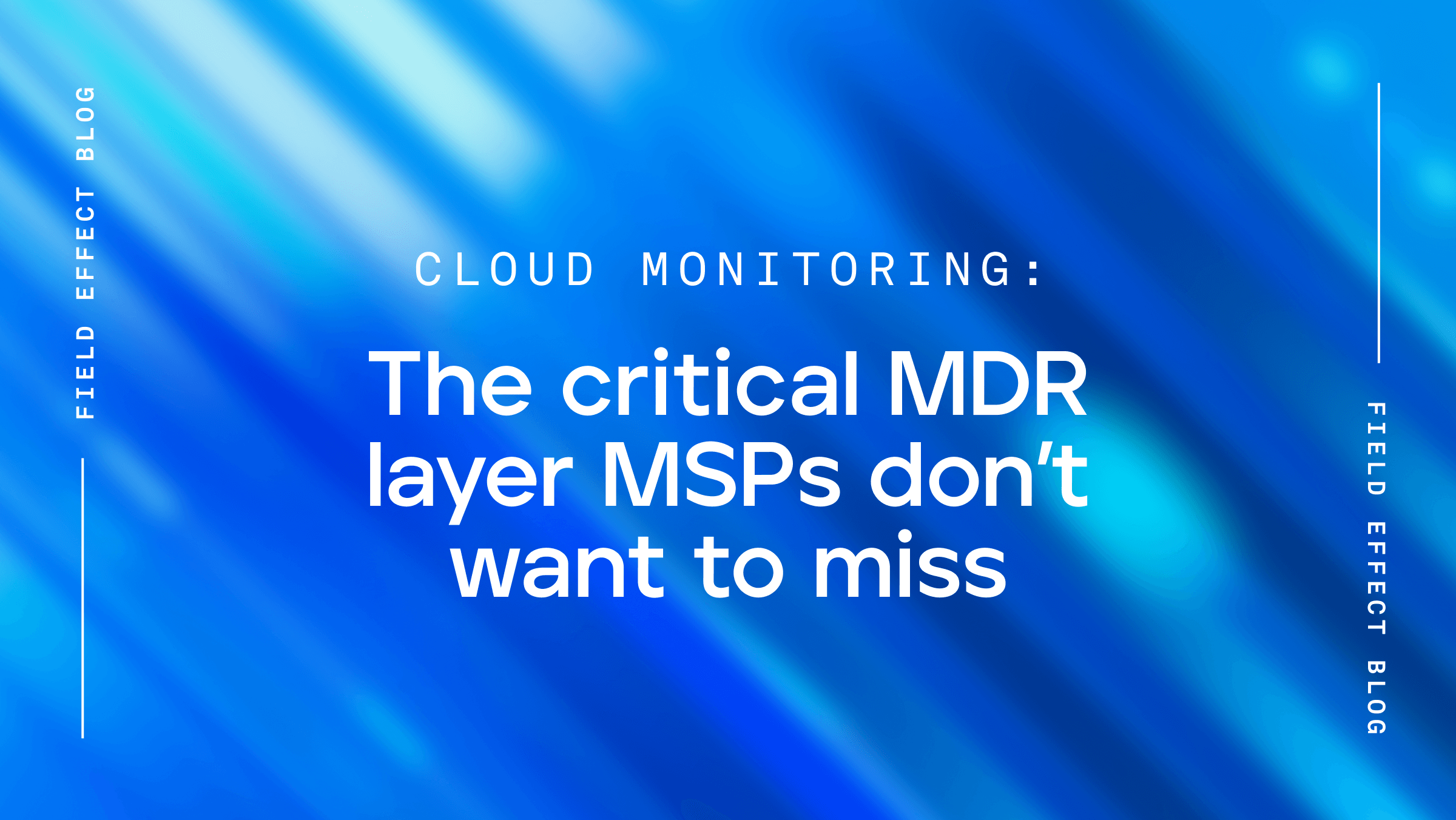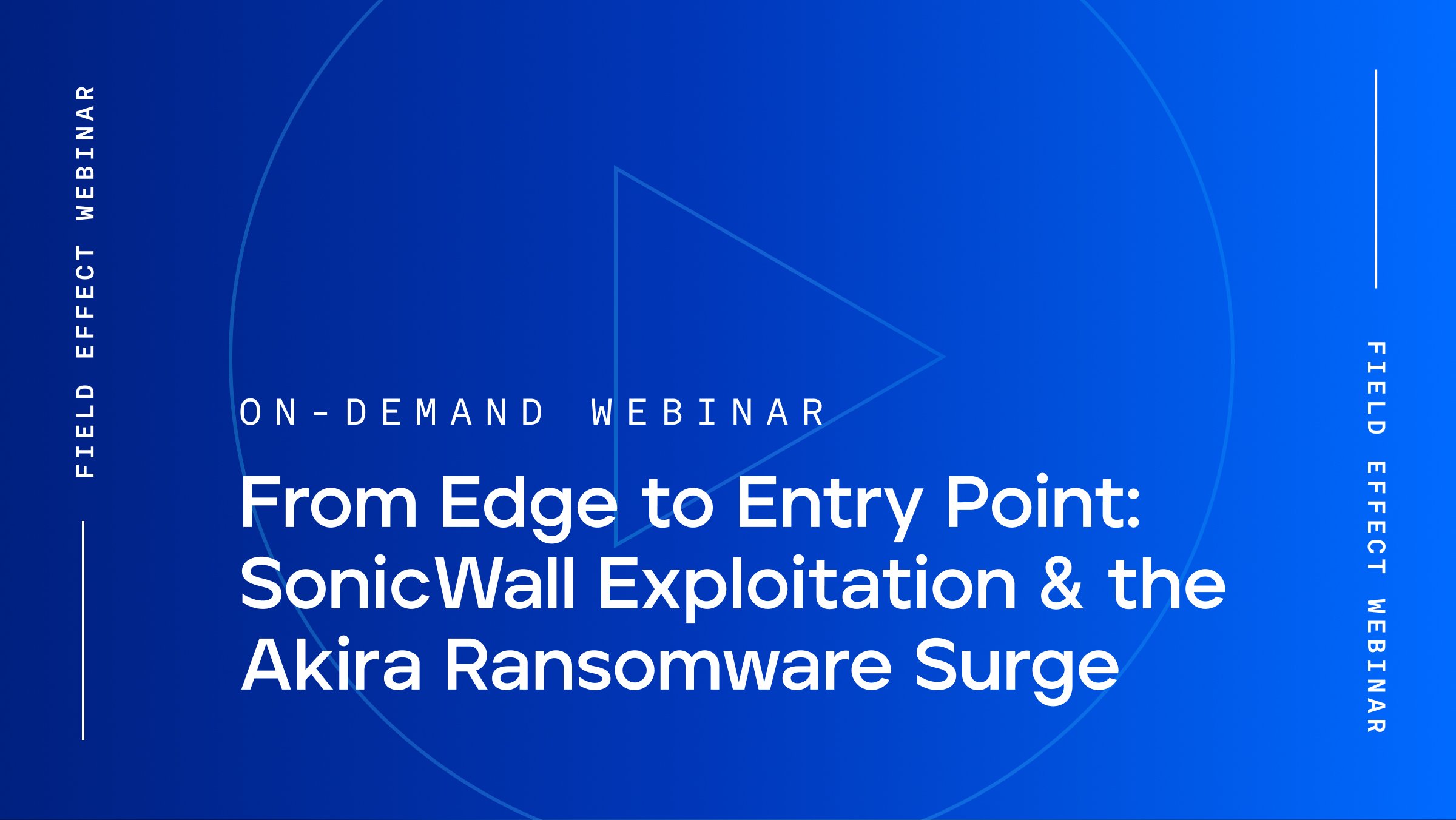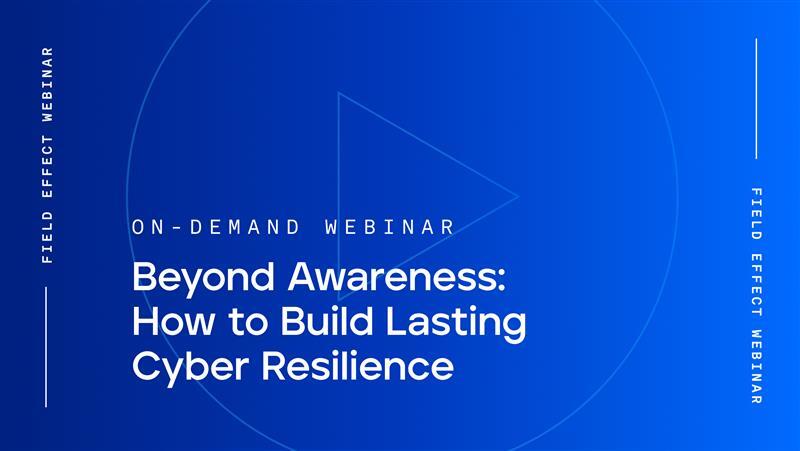
Blog Post
April 2, 2024 | Cybersecurity education
By Field Effect
Cybercrime is steadily on the rise in the United States. According to data from Statista, some 480,000 cyberattacks were launched across America in 2022 alone. As bad actors continue to develop new strategies and tools for launching attacks on their targets, organizations must create a robust cybersecurity strategy that keeps up with evolving threats.
You might have a few cybersecurity-related policies, which is an excellent start. But policies are just that—a start. In today's digitized, interconnected world, businesses should take concrete action to address any vulnerabilities that cybercriminals may seek to exploit.
A cybersecurity strategy is a comprehensive plan for preventing cyberattacks from occurring in the first place, along with rigorous procedures for mitigating the impact of cyber incidents when they do happen.
Let's start with an overview of the fundamentals of building an effective cybersecurity strategy to protect your business.
An organization with good cybersecurity will have a top-to-bottom approach to prevent various attacks, with consistent protocols for properly responding to a successful cyberattack.
In addition, a business with good cybersecurity recognizes the many dangers threat actors may pose and tends to approach cybersecurity from a risk management perspective.
While various organizations may rely on differing methods or controls to bolster cybersecurity, the CIA Triad breaks down good cybersecurity into three primary components.
This pillar of cybersecurity is all about protecting unauthorized users from accessing sensitive data. Methods for ensuring confidentiality include using multi-factor identification on all devices and instructing employees to update passwords regularly.
Organizations should also take steps to compartmentalize the accessibility of private information between departments to help mitigate the chances (and severity) of a security breach. For instance, you can consider investing in private servers for your financial and HR departments for an added layer of security.
Data integrity refers to making sure all sensitive organizational data remains intact, accurate, and insulated from modification by threat actors.
Everything from the initial data transmission to the end storage point should be fully protected with measures, like encryption, digital signatures, and other forms of identity verification, to prevent unauthorized parties from altering, deleting, or stealing data.
While confidentiality and integrity are key to good cybersecurity, it’s essential that all authorized users can easily access the data they need when they need it. Consistent use of secure file-sharing and storage methods is the best way to accomplish this without undermining security.
In some cases, such as during a denial of service attack, threat actors can potentially render resources and data unavailable to authorized users without needing to gain access to the data directly.
To reduce the likelihood of this attack, steadily monitor your company’s network traffic for anomalies and take steps to restrict atypical communications between various network resources.
Developing a solid cybersecurity strategy involves many moving parts that can seem a little daunting to manage. But once you understand the challenges organizations face when improving their security posture, you'll find it much easier to create effective countermeasures against today’s threat actors.
Here are some of the biggest difficulties companies encounter while pursuing better cybersecurity.
The development of generative artificial intelligence (AI), automation, and increasingly powerful computers in smaller packages have helped many organizations streamline operations across the board over the past several years.
However, advances in technology aren’t relegated to the business world. Threat actors are also constantly upgrading their toolkits to launch more sophisticated attacks—faster—that pose greater risks to the organizations they target.
Few companies today can operate effectively without relying on a mix of computers, miscellaneous devices, and software applications. This also means that the number of vulnerabilities and threat vectors for organizations large and small will only increase.
Companies that were able to kick the "cybersecurity can" down the road in the past now realize that adopting new digital solutions and improving cybersecurity efforts must go hand-in-hand.
Humans can and will make mistakes, even if you have a strong cybersecurity strategy. Many of these errors are accidental, often caused by an employee opening a legitimate-looking, but malicious-in-nature, email from a work computer.
Still, mistakes like these can open the door for threat actors, offering them the initial access needed to launch more sophisticated or damaging attacks, including ransomware.
Employees need a better understanding of what they can do to prevent attacks, but for some organizations, finding the time and money to fund better cybersecurity education can be difficult.
Many organizations lack the expert personnel needed to protect themselves from cyber threats. For businesses working with tighter margins, hiring a dedicated cybersecurity team is simply out of the question.
Due to budgetary or personnel constraints, some companies may have to accept the bare minimum, opening their business up to otherwise preventable cyberattacks.
The surge in remote work that began with the COVID-19 pandemic still largely exists today and has placed many companies in an awkward position. Ensuring the security of communications and data sharing between various potentially unsecured devices can be risky.
Generally, home networks offer less security than those found at most workplaces. As such, many companies now need to manage cybersecurity not just in their owned offices, but remote locations too.
For some organizations, this isn’t easy to implement overnight.
A strong cybersecurity strategy involves many moving parts, so it may be helpful to break things down into smaller sections to ensure you don’t overlook any vulnerabilities in your business.
Here are five key elements that every cybersecurity program should include.
First, create an incident response (IR) plan that provides your workforce with a playbook for what to do if a cyber event disrupts operations.
This incident response plan should identify critical assets within your organization, such as data backups or networks that are essential to daily workflows. Protecting these critical assets is paramount, so it’s important to create redundancies so that if one asset becomes compromised, the intrusion doesn’t cascade into the rest of your digital infrastructure.
An incident response plan should also outline the responsibilities of stakeholders when a cyber incident occurs, and identify alternative replacement personnel in case decision-makers are out of the office.
Many organizations that aren't sure how to build an incident response plan will turn to free, online templates, but IR plans aren't one-size-fits-all. Instead, consider investing in an incident response readiness service. You'll walk away with an IR plan, but that's not all.
During the IR readiness service, we:
To keep your backups safe from threat actors, keep one or two extra copies of your data in remote locations that are completely inaccessible from on-site networks.
In addition to storing backups on physical hard drives, you can consider using a secure cloud server for easy retrieval later. Remember to create new backups regularly, preferably at least once a week, so all your essential data is always updated.
This aspect of a cybersecurity strategy involves putting endpoints and cloud protections in place.
Basic endpoint security consists of antiviruses and static, signature-based defenses, but these tools on their own can't sufficiently protect organizations from determined or advanced threat actors. The rapidly changing threat surface means organizations need security monitoring capabilities to detect anomalous and malicious activities as they happen.
The same applies to all cloud applications and services your organization relies on.
Email remains a major vulnerability for many companies. Threat actors use email to deploy phishing attacks, malware, and social engineering scams to acquire personal data or access critical systems.
Create strict policies regarding the use of email so your workforce will be less likely to inadvertently open the door for intruders. These policies should discuss the importance of strong passwords, multi-factor identification, and patching email security programs.
Since your workforce often represents the first line of defense against cybersecurity threats, employees must know how to recognize threats and respond to them properly. Provide periodic training courses for employees regarding current cyber threats, sharing real-world examples of recent incidents within the industry.
Security awareness training should discuss topics such as how to recognize suspicious emails, data privacy compliance standards, procedures for reporting threats, and the dangers of using personal devices for work purposes.
The most effective cybersecurity strategies seek to cover any potential vulnerabilities. Aside from the five key components of a cybersecurity strategy listed above, there are several additional areas of concern to consider:
With the main components of a good cybersecurity strategy mapped out, you’re now ready to implement your plans. Before long, your organization will be fully prepared to confront cyber incidents confidently.
Follow these three steps to get started.
The only way to fully insulate your business from cyber threats is to provide around-the-clock threat monitoring, detection, and response for all your IT assets.
Unfortunately, taking on all the responsibilities of your cybersecurity strategy in-house isn’t always feasible for every company. That’s why it’s a good idea to consider outsourcing the work to experienced professionals.
At Field Effect, we provide comprehensive support for monitoring your entire threat surface in real-time, 24 hours a day, 7 days a week. With our managed detection and response solution, our team will automatically detect and address threats as they arise, allowing you to focus your workforce and resources on the business at hand.
There are a variety of cybersecurity frameworks to choose from, and the one you implement should address the unique challenges and vulnerabilities your organization faces. Among these frameworks? The CIS Controls, NIST CSF, SOC2, and the ISO27001-Compliant Information Security Management System.
Sometimes, your company may be required to meet more stringent regulatory or national security cybersecurity frameworks. If you’re uncertain about which framework is right for your organization, take a few moments to review our Cybersecurity Frameworks 101 to learn more.
After selecting the cybersecurity framework for your business, it’s time to implement specific controls and policies to enforce your overall cybersecurity program.
Bear in mind that this process is not a one-and-done. It requires continuous effort and investment to get it and keep it right. Cybersecurity frameworks often contain hundreds, or even thousands, of various controls that typically offer little guidance on methods for implementation.
Developing strong cybersecurity from scratch is no easy task, but in today’s fast-moving, technological world, you can't ignore the risks that threat actors pose.
Following the tips provided here will help get your organization’s cybersecurity program off the ground. However, it can be time and resource-intensive to assess, analyze, and measure your cybersecurity efforts, and then identify the next steps for improvement.
Field Effect's cybersecurity assessments offer expert-led guidance that helps you answer key questions such as:
Ask us about our cybersecurity assessments and how they can benefit you today. Or, watch this on-demand webinar explaining our cybersecurity assessments.


